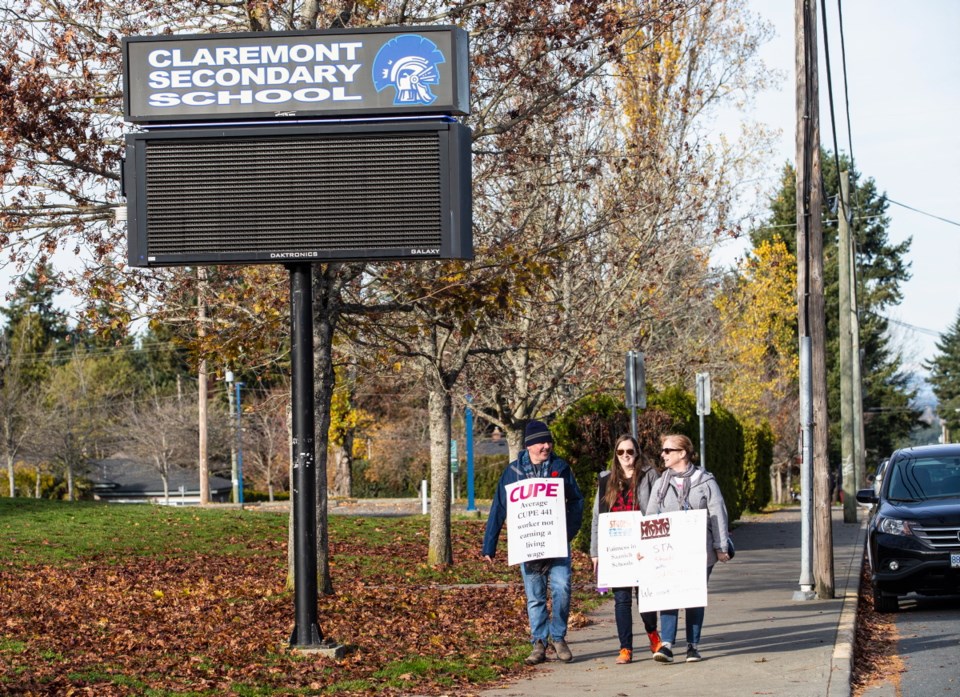The president of the union representing striking support workers in Saanich School District says the provincial government needs to step in with funding, as the labour dispute that has shut down schools for almost 8,000 students reaches the end of a second week.
Dean Coates, president of the Canadian Union of Public Employees Local 441, said the province needs to provide the money to increase Saanich support workers’ wages to those of similar workers in surrounding school districts.
“This fight is more with the government than our employer. The employer is the messenger,” said Coates, who estimates it would cost between $1 million and $3 million to fund wage parity for about 500 support workers who are on strike. Those workers, including education assistants, counsellors and custodians, began job action Oct. 28. Teachers are not crossing the picket lines.
The district said in a statement Thursday that the union turned down “the best deal possible,” including increases of 7.1 to 12.8 per cent over three years, with the higher increases targeted to staff with the lowest wages relative to other districts. The district has said it’s offering the maximum amount of money it is able to within a provincial framework that regulates public-sector wage increases, limiting them to two per cent annually over the next three years.
But Coates has said the wage increases on offer would only close the gap for some staff, and does nothing to address the needs of bus drivers, custodians and administrative workers. Coates said the district is struggling to retain staff in these positions because of the wage disparity, leading to chronically short-staffed schools.
The provincial framework includes a provision allowing “conditional and modest” funding that can be used to improve services for B.C. residents. Addressing chronic labour-market challenges is one example of how the funding can be used.
Coates said the union’s struggle to attract and retain staff in roles that are paid up to several dollars less per hour than their neighbouring counterparts fits into this provision.
But superintendent Dave Eberwein said the district has already accessed the funding available through the provision. Eberwein said the district offered an extra $96,000 annually to bump up wages for education assistants, who earn several dollars an hour less than their counterparts in neighbouring districts.
Eberwein said there is no more funding available and the province has been clear that it will not open the provincial bargaining mandate.
“There is no more money coming,” Eberwein said. “We’ve put every dime on the table.”
As the strike nears 10 days, some parents are increasingly frustrated that their children remain out of the classroom. In a letter to the Times Colonist, Brett Webster, a parent of students in grades 7 and 11, questioned why education is not considered an essential service, like health care.
“Why are they not deemed the same as nurses?” Webster wrote. “Is educating our youth not critical?
“How can these groups support job action during term time and say it is in the interest of the children?”



